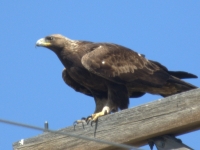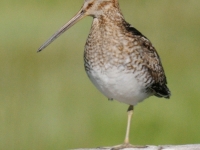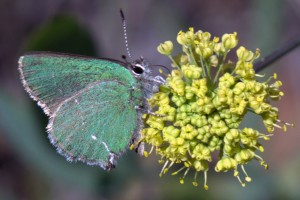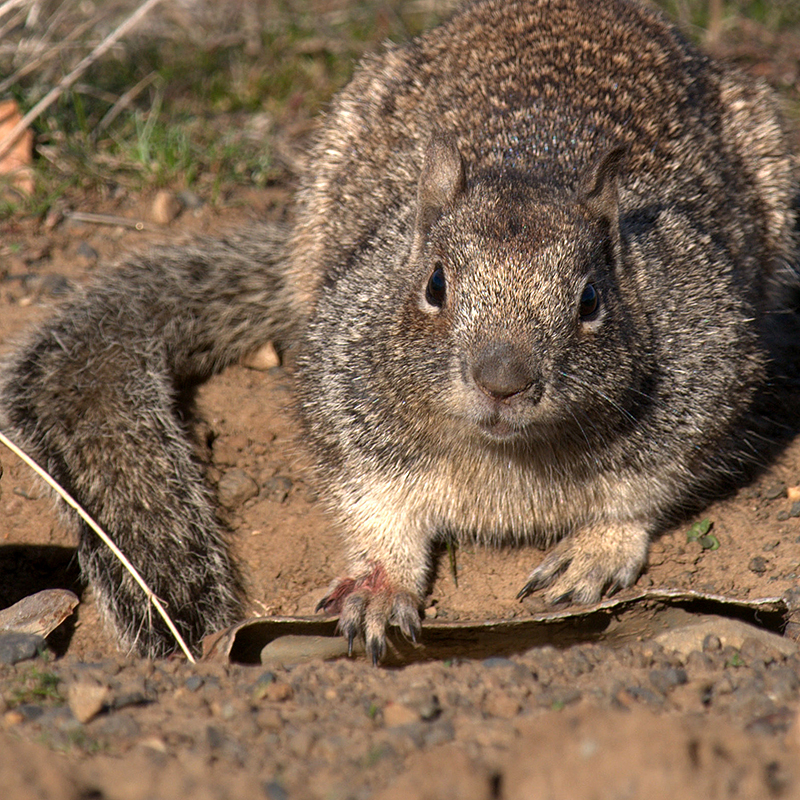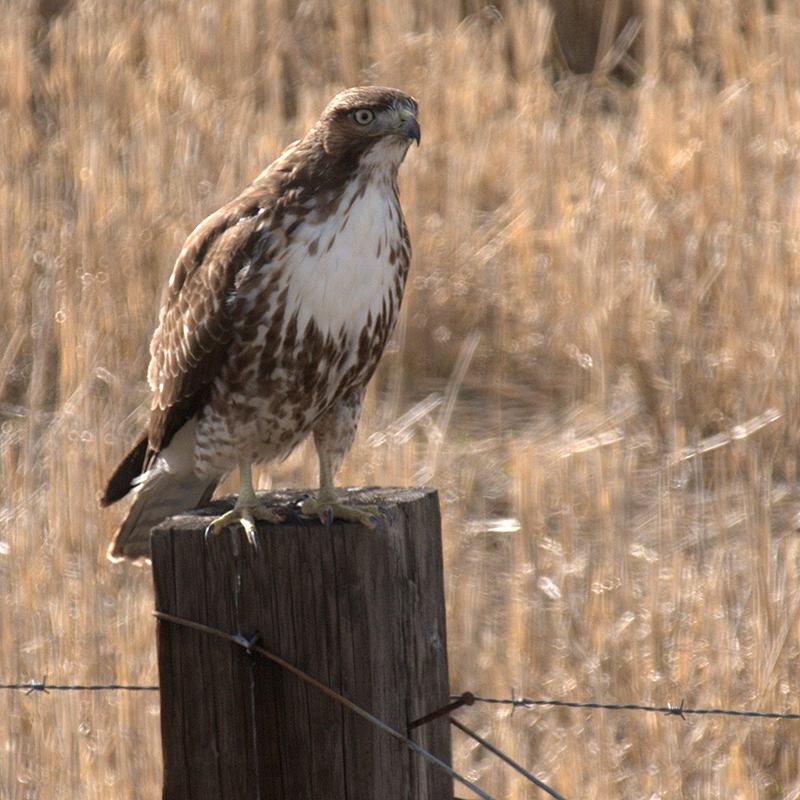Marvin wanted to see a large flock of snow geese in flight so we planned a field trip to the Malheur Field Station and as insurance planned to include the Summer Lake Wildlife Refuge on our itinerary. You can find a YouTube video of Snow Geese in flight so you can look at what became our motivation to see the event ourselves.
Leaving Gresham on last Tuesday morning during a snow storm caused us some worry about road conditions in the mountain passes leading across the Cascade Mountains so we decided to follow the water grade and detoured through the Columbia River Gorge to The Dalles. We had tire chains with us but did not relish the thought of putting on chains to crunch snow. It was worth the extra one hundred plus miles to avoid traversing the higher mountain passes where chain-ups were required.
We arrived in Burns, find OR, early afternoon and headed toward Frenchglen. We saw a few snow geese near Harney Lake so we knew we wouldn’t be skunked but we wanted more numbers. We drove directly to the Buena Vista Overlook anticipating more geese but we were surprised to find the ponds nearly dry. We drove up the Center Patrol road toward the Malheur Field Station. It’s gravel road and rough so going was slow.
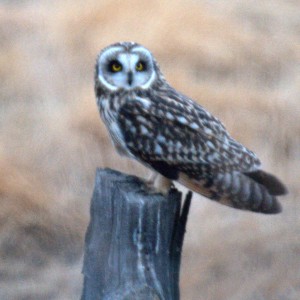 We were pleased to spot a Short-eared owl perched on a fence post and managed a picture before it flew. I wished for the video camera I have been drooling over as the owl performed a few acrobatic wing-overs as it hunted across the marsh near the road. In my imagination I would have captured its antics in video.
We were pleased to spot a Short-eared owl perched on a fence post and managed a picture before it flew. I wished for the video camera I have been drooling over as the owl performed a few acrobatic wing-overs as it hunted across the marsh near the road. In my imagination I would have captured its antics in video.
The Malheur Field Station office was closed when we arrived so we proceeded back to Burns to find a motel for the night.
Wednesday morning dawned with several inches of snow on the ground. Our plan was to again head for Frenchglen where we would follow the dikes back toward the Malheur Field Station, a distance of about 40 miles. We spotted several Sandhill Cranes on the way, barely in photographic range, so it promised to be a good day birdwatching.The Patrol road from the “P” Ranch turned up several Rough-legged Hawks and a number of Ringneck Pheasants but not much that would hold still for a photo opportunity.
The office at the Field Station was still unoccupied so we elected to drive around the Alvord Lake side of the Steens Mountains and head for Lakeview, OR, where we would spend the night before proceeding to Summer Lake. Snow covered desert vistas along the route were spectacular so we stopped often to capture the evening light illuminating the desert. Near the Alvord Ranch a herd of mule deer crossed the road in front of us. There were at least a hundred deer in the herd. They appeared to be in good shape for this time of year but were moving slowly. They leaped the barbed wire fence roadside, one at a time, and again I wished for the video camera. Snapshots just don’t tell the story..
This leg of the journey to Lakeview took us to Denio, Nevada, and the remainder of the trip to Lakeview would be accomplished in the black of night. Somewhere in Nevada, highway 140, a black horse crossed the road in front of us. We had been rolling along about 70 mph but after the horse crossing we eased off the accelerator.
We had been this route before, during daylight, and knew we were missing some great scenery. The air temperature was dropping below freezing and snowflakes were flying, creating hypnotic swirls in the headlight patterns. The roads were clear of snow accumulations in the Warner Mountains so again we escaped having to chain up our vehicle.
We arrived in Lakeview just before ten o’clock at night. Motels are scarce in Lakeview so we were pleased to find vacancy at the Interstate Eight Motel. Perhaps if we knew when we were going to arrive it would have been wise to make reservations. It’s a long way to the next town where motels are located.
Lakeview has the reputation of being the “tallest” town in Oregon, elevation of 4,800 feet. It can snow any day of the year in Lakeview. So bring along a warm jacket, even in the summer.
Thursday morning, after a few fat pills and a cup of coffee courtesy of the motel, we drove south toward Goose Lake and at the small town of New Pine Creek, exited the highway to a lakeside park, hoping again to see a large flock of snow geese. No such luck, but we did see three Sandhill Cranes roadside. We stopped for pictures and watched the trio feed. They did a ballet together… where can I buy that video camera I want?
We decided to take a side trip to the town of Plush and check the series of lakes along the Hart Mountain Rim. The wind was blowing a blast, probably near 50 mph, but we did see a few geese roadside. We found a shortcut to highway 395 and headed for Summer Lake.
I worked for the Oregon Fish and Game Refuge at Summer Lake back in 1960 so knew my way around the marsh located there. These days one must purchase a parking permit at a cost of seven dollars a day. One (or more) can be purchased at the store in Summer Lake so if you are unsure of your arrival date you are safe in waiting to buy a permit locally. Our drive around the dikes on the refuge weren’t producing but in the distance we could see a cloud of snow geese orbiting one of the ponds in the basin. As we left the Fish and Game area we met Mr. St. Louis, station manager, and had a pleasant chat. He gave us directions to where we could view the snow geese.
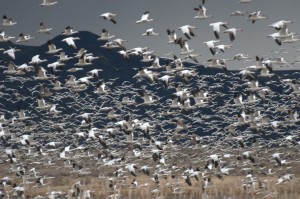 It was awesome… incredible… you haven’t lived until you have seen a couple thousand white snow geese explode into the sky, swirl around (how do they keep from colliding) and then settle back down. Put it on your bucket list. And, buy that video camera you have always wanted before you go on that field trip.
It was awesome… incredible… you haven’t lived until you have seen a couple thousand white snow geese explode into the sky, swirl around (how do they keep from colliding) and then settle back down. Put it on your bucket list. And, buy that video camera you have always wanted before you go on that field trip.
After validating the reason for our trip we headed back to Lakeview and the Interstate Eight Motel to spend one more night. Friday morning, during a blizzard of a snow storm, we headed for Klamath Falls and a look at the Klamath marsh. Snow and wind spoiled the day for bird watching and we had miles to go headed home. We drove highway 97 to Chemult and then highway 58 back into the Willamette Valley. The road remained clear of ice and snow so we never had to use the tire chains we carried with us. We logged 1,648 miles in four days and had a memorable outing looking for the Snow Geese.
Pictures will be added…
 Duncan had mist nets set near a feeding station so we could look at several species up close and personal (he is licensed to do this so don’t do it at home unless you have proper certification). After an hour or so examining birds we boarded the passenger van for a tour of the marshes surrounding Malheur Lake. The cold weather subdued the mosquitoes (much to our delight).
Duncan had mist nets set near a feeding station so we could look at several species up close and personal (he is licensed to do this so don’t do it at home unless you have proper certification). After an hour or so examining birds we boarded the passenger van for a tour of the marshes surrounding Malheur Lake. The cold weather subdued the mosquitoes (much to our delight).





